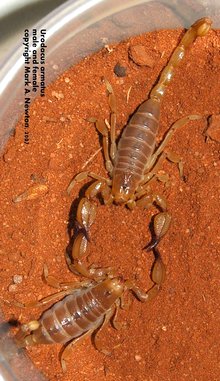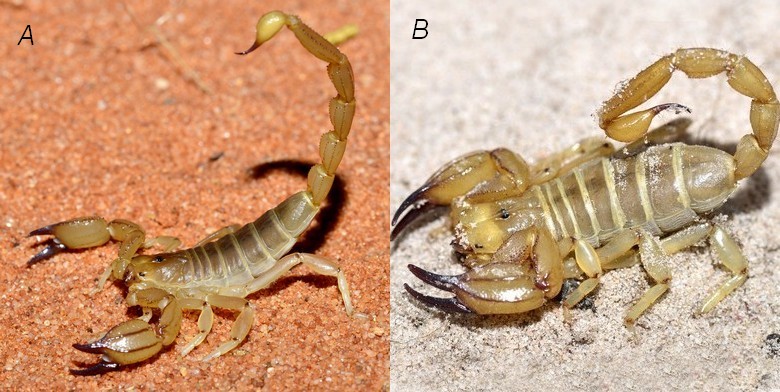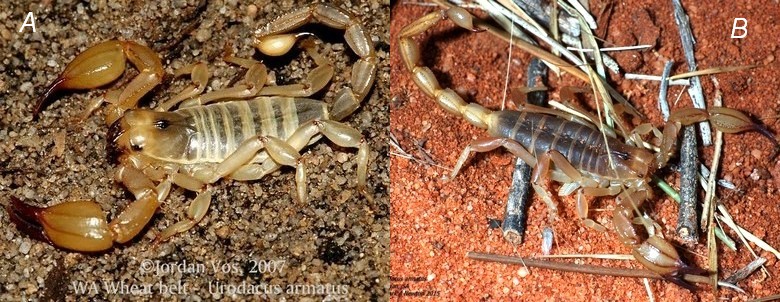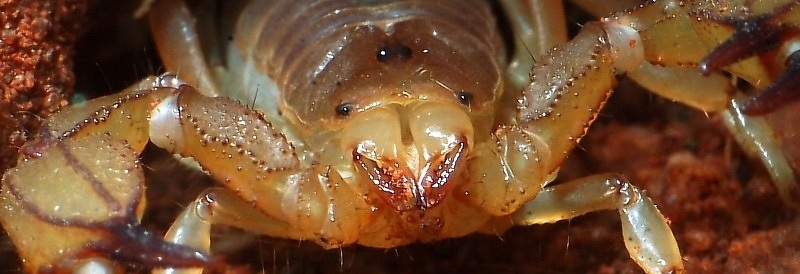
Size: 30-60mm
Ecomorphotype: Semi - Fossorial Obligate burrower
Description: A member of the endemic Australian Urodacidae family, whose closest relatives include members of the Scorpionidae inc., Heterometrus, Opisthophthalmus, and Pandinus.
This species is relatively small, being similar in size to U. manicatus. Usually a uniform light sandy colour with dark red leg joints. Hands are robust with short fingers, similar to U. manicatus. Tarsal claws are equal length. Legs are relatively short for a desert adapted species. A sand comb is present on the front two leg patella’s. Cheliceral teeth show a lack of secondary serrations.
Sexing: Males have a slightly longer metasoma with significantly longer pectines and many more pectinal teeth, often twice that of the female. Males also display the typical Urodacid split operculum with genital papillae. Otherwise there is very little sexual dimorphism.

Male and Female
Just putting a male with a female is enough to initiate the promenade-a-deux
Due to occupying such a wide range of soils burrow entrances vary quite considerably. In loose soil as stated there is often no burrow entrance, in hard soils the entrance is often crescent shaped with no sign of surrounding excavated soil (see inset image with coin), intermediate soils often show a noticeable fan of excavated soil around the entrance more typical of most other Urodacus.
Probably one of the most taxonomically challenging species complexes, quite possibly none of these scorpions has ever been described as there is suggestion the holotype may have been misinterpreted or mislabeled. Regardless, at present all these typs of scorpions are lumped into the one species. No doubt there will be a number of species in this complex as there is much variability across its range.

From Morgan, SA - A: Adult female, B: Burrow entrance

Two forms from SA - A: typical inland desert SA form. B: form from the cooler, wetter SE of SA

WA and SA forms. A: WA wheat belt. B: SA Mallee - male
Reference:
Koch, L. E. 1977. The taxonomy, geographic distribution and evolutionary radiation of Australo-Papuan scorpions. Records of the Western Australian Museum 5 (2):83-367.
